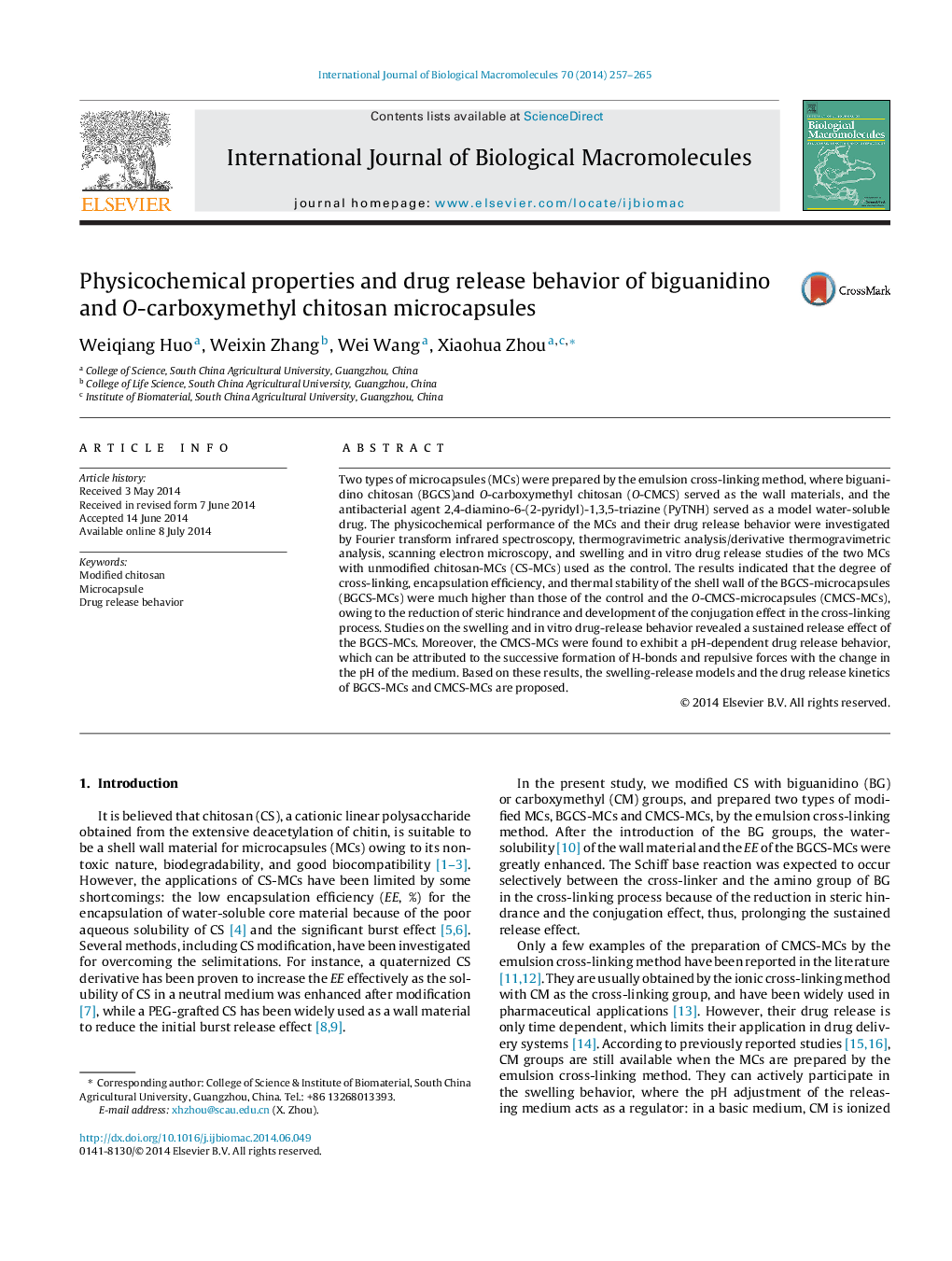| Article ID | Journal | Published Year | Pages | File Type |
|---|---|---|---|---|
| 1986336 | International Journal of Biological Macromolecules | 2014 | 9 Pages |
•A good antibacterial activity of 2,4-diamino-6-(2-pyridyl)-1,3,5-triazine (PyTNH) was found for the first time.•Biguanidinochitosan and O-carboxymethylchitosan microcapsules loaded with PyTNH have been prepared.•After modification of shell walls, the encapsulation efficiency of the microcapsules were improved.•Drug releasing of biguanidinochitosan microcapsules were sustained.•O-carboxymethylchitosan microcapsules were exhibited a pH-dependent drug release behavior.
Two types of microcapsules (MCs) were prepared by the emulsion cross-linking method, where biguanidino chitosan (BGCS)and O-carboxymethyl chitosan (O-CMCS) served as the wall materials, and the antibacterial agent 2,4-diamino-6-(2-pyridyl)-1,3,5-triazine (PyTNH) served as a model water-soluble drug. The physicochemical performance of the MCs and their drug release behavior were investigated by Fourier transform infrared spectroscopy, thermogravimetric analysis/derivative thermogravimetric analysis, scanning electron microscopy, and swelling and in vitro drug release studies of the two MCs with unmodified chitosan-MCs (CS-MCs) used as the control. The results indicated that the degree of cross-linking, encapsulation efficiency, and thermal stability of the shell wall of the BGCS-microcapsules (BGCS-MCs) were much higher than those of the control and the O-CMCS-microcapsules (CMCS-MCs), owing to the reduction of steric hindrance and development of the conjugation effect in the cross-linking process. Studies on the swelling and in vitro drug-release behavior revealed a sustained release effect of the BGCS-MCs. Moreover, the CMCS-MCs were found to exhibit a pH-dependent drug release behavior, which can be attributed to the successive formation of H-bonds and repulsive forces with the change in the pH of the medium. Based on these results, the swelling-release models and the drug release kinetics of BGCS-MCs and CMCS-MCs are proposed.
